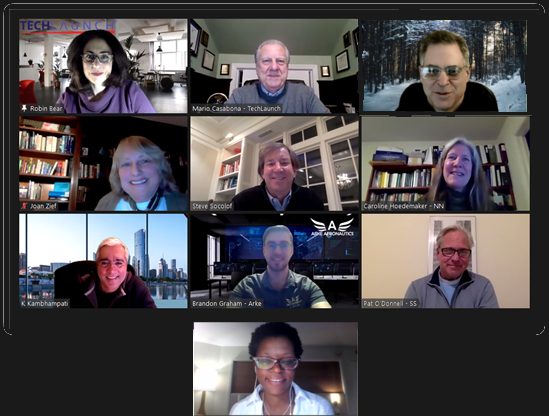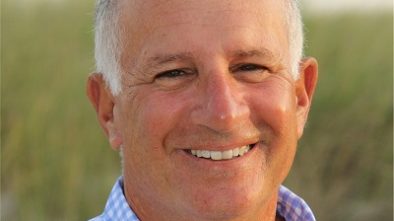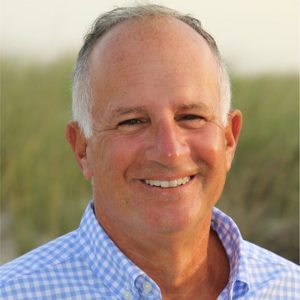Pennington-Based Neoneur Takes Home First Place in December TechLaunch BullPen
Neoneur, a Pennington-based startup with a digital developmental biomarker for neonates that can detect complications in feeding and respiration, was the winner of the December TechLaunch pitch competition.
Neoneur’s founder and CEO is Caroline Hoedemaker, a veteran of the New Jersey tech and life-sciences community. Hoedemaker’s pitch highlighted the advantages of Neoneur’s device, which would cut the time that infants with feeding or respiration problems would have to stay at the hospital.
According to Mario Casabona, TechLaunch (Kinnelon) founder and managing director, the overall mission of his organization is to commercialize emerging technologies by finding and nurturing early-stage tech ventures, in order to accelerate their growth via mentoring, coaching, networking and access to resources and capital.
Judging the December BullPen were Lorine Pendleton, investment partner at Portfolia Rising America Fund (San Mateo, Calif.) and New York chair at Tiger 21; Steve Socolof, investor and managing partner at Tech Council Ventures (Summit); Krishnamurty Kambhampati, investor and partner at Cloquet Capital Partners (New Canaan, Conn.), and Joan Zief, early-stage investor and managing partner at Golden Seeds (New York).
Robin Bear, founder of Robin Bear Consulting, in Madison, emceed the evening, and Eric Korb, a TechLaunch senior mentor, acted as the webinar producer. The BullPen winner gets the opportunity to pitch to the Jumpstart New Jersey Angel Network (New Brunswick) and to Tech Council Ventures, and receives up to $15,000 worth of services from TechLaunch partners.
Arke Aeronautics
Up first to pitch was Brandon Graham, cofounder and CEO of Rowan University-backed startup Arke Aeronautics (Glassboro), whose software platform connects first responders to life-saving information on their cell phones and tablets before they arrive on the scene, so they know where to go, and exactly what to expect when they get there. He told the group that “first responders are real-life superheroes, but the tools they have to collect, consume and share information are fundamentally broken.”
He noted that the market is large, with thousands of departments and millions of first responders all facing similar challenges. Arke raised a seed round last year “to de-risk our technology, validate our concept and pricing and commercialize our platform. And we offer a service subscription model with strong early traction and public safety in defense markets,” he told the group.
Graham noted that the company has a number of customer trials in the works, funded by government grants. Optimistically, he said, “We’ve already begun preparing a $750,000 phase-two [SBIR] proposal to actually implement our technology on base [Joint Base McQuire-Dix-Lakehurst], and this could be a multimillion-dollar opportunity as a sole source contractor for 400 domestic U.S. military bases across the country, each with multiple EMS, fire and police departments on base.”
An audience member asked Graham about the platform, which he had called “open,” and wondered what he meant. Graham noted that his organization offers first responders a way to integrate all of the solutions that they’ve already figured out work best for them, and that they’ve invested in, into a single mobile platform.
Pendleton asked Graham about the sales cycle for the platform, and he acknowledged that it’s a long sales cycle, around six to 12 months. However, as the platform moves out of the military and into county-level government, that sales cycle can be shortened, he stated.
Neoneur
Hoedemaker presented Neoneur next. She called Neoneur a “a billion-dollar medtech, AI-driven opportunity to improve the outcomes for at-risk newborn infants, using a digital biomarker to track their clinical stability, capability and neurological development.”
The device Neoneur is continuing to perfect helps kids with feeding disfunctions, who are often hospitalized, with the aim of helping them return home sooner. Many are preterm infants who have not developed the feeding skills that typically appear late in gestation.
In 2019, Neoneur licensed the technology for the device, which is based on research by Barbara Medoff-Cooper, of the University of Pennsylvania. “Because our upgraded device will be able to transmit data remotely, it provides a nice consistency between clinical observations in the hospital, the follow-up clinic, the pediatrician’s office and the home, preventing the need to readmit or retain the infant.”
The company has had considerable success, including winning both private and public research grants. “Our plans for 2021 include completion of our clinical product, with submission to the FDA, raising $2.5 million for launch and supporting clinical studies, with the opportunity for an additional $2 million raise, which would accelerate our growth for developmental application.” Hoedemaker stated.
An audience member asked about how the company would handle sales. “My belief is that, for most medical devices, it makes sense to go to the clinician first.” But the founders are also considering going directly to the consumer at some point. They want to scale first through the sickest infants in neonatal intensive care units. There are about 220 of these units at specialty hospitals around the United States. Neoneur expects to expand to referring hospitals after that.
Socolof asked how the device would fit into the workflow of a hospital neonatal unit, and Hoedemaker said that the company had thought of that question, and is “double-checking our beliefs” by speaking to 150 feeding specialists who are also clinicians at hospitals. The team is working to make sure that the device, which is Bluetooth enabled, will be easy to use. It will also be easy to clean.
Zief wanted to know more about how insurance reimbursement would work. As long as the patients have insurance, there will be “adequate reimbursement, coding and payment coverage already to cover the cost of the use of our device,” Hoedemaker answered. “And, not only that, it will drive hospital revenue.”
SwingShot
Patrick O’Donnell, cofounder and president of SwingShot (Morristown), presented next. SwingShot provides a “virtual sports training platform to the PGA teaching profession that includes an in-field Cyclops camera for capturing video content, cloud services for storage, software and access to select SwingShot-certified PGA teaching professionals within their established marketplace.”
When SwingShot first started, it was little more than a selfie stick with a camera mounted that could capture videos on a golf course, driving range or practice room. Golfers could use this device to improve their swing. The firm has sold 3,000 of them, and has also been able to try out different methods of distribution and to gather a great management team, O’Donnell said. The camera was developed so that it would not slow down the pace of play or interrupt gameplay.
The new generation of SwingShot will upload videos to the cloud. The company will then send those videos to select PGA teaching professionals. The professionals use the startup’s proprietary software to send back a lesson based on the video that they received from each golfer. For the golfer, there’s an app that lets him/her upload the video to the cloud; the golfer can then select the pro from a list of available pros with very different areas of experience, and then the golfer gets back a very simple, streamlined and effective lesson.
An audience member mentioned that the golf industry is declining, with many courses closing, and he wondered what that would do to SwingShot’s business. O’Donnell acknowledged that this was the case, but noted that many avid golfers never take lessons because they are too expensive and too time consuming, or because they feel too awkward. With this product, they can take a few swings in the privacy of their own homes and get specific training information to improve their game. It’s a perfect activity during the pandemic, he suggested.
Kambhampati commented that O’Donnell has an opportunity to turn SwingShot into a social network, where golfers could share videos and pro suggestions. “People like to share their game with others,” he told O’Donnell. He suggested that this approach could broaden the reach of the app, and then the targeted training could be used as an “upsell” for additional revenue.




